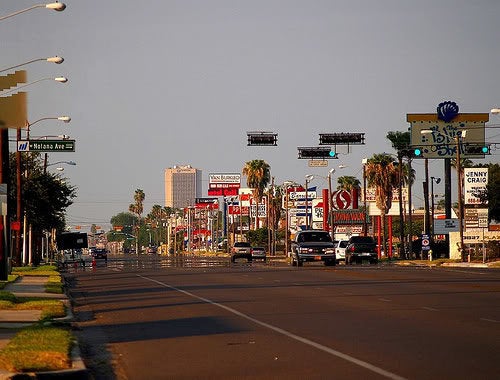At a distance, Jani Leinonen's latest art exhibit blends into Budapest's cityscape seamlessly. "Hunger King" -- with its bright, familiar logo and bold, red letters hanging outside a store front -- looks like any standard fast-food restaurant on a busy street corner. But take a closer glance, and you'll see the Finnish artist's project is anything but your typical burger joint.
Highlighting Hungary's controversial treatment of its poor and homeless populations, Leinonen's exhibit uses corporate signage to critique the widening gap between the rich and the poor. Instead of Coca-Cola products, for example, the exhibit offers patrons "sloth," "lust" or "greed" out of its faux soda fountain machine.
In 2012, Hungary passed a measure that essentially banned homelessness, NPR reported. In what some consider the toughest anti-homeless legislation in Europe, the law allows people sleeping on the street to face hefty fines and even the possibility of jail time. Anti-poor policies like that one are what motivated Leinonen to move forward with his project, which is part of an artist event series called Luukku Atelier.
Before experiencing the interior of "Hunger King," onlookers decide which way they'd like to enter: Through the line for the "poor," or the line for the "rich," a video produced by Euro News explains. Nearby signs list exactly how the Hungarian government treats each group: The rich can expect tax decreases, high quality schooling and generous family benefits, while the poor face tax increases, inadequate support for their families and a lack of access to equal opportunities for their children.
Patrons won't find food inside. If they enter through the line for the poor -- which remains open to the first 50 people who arrive -- they receive a "burger box" that contains 11 euros (about $14.90), which is comparable to the country's daily minimum wage.
Although the exhibit focuses on Hungary's unequal treatment of its citizens, Leinonen said the theme of "Hunger King" is relevant around the world.
"I'm not here to point the finger at only Hungary," Leinonen said in the video of his project, which runs until July 6. "I think [the gap between rich and poor is] a global problem. I think Hungary just kind of depicts the global problem right now really well. I mean, I could do this [exhibit] in Helsinki or in Paris at the same time, and it would work exactly the same."
Many would argue that he could bring the exhibit to the U.S.
On Monday, the the International Monetary Fund cut its forecast for economic growth in the US this year. One of the organization's recommendations for changing the outlook was raising America's dismally low federal minimum wage, which currently stands at $7.25 an hour.
When it comes to treatment of its own homeless population, the U.S. doesn't do much better than Hungary. A recent report showed 33 American cities have passed measures restricting feeding the homeless in the last year alone. Some local ordinances penalize those who break the law with hefty fines -- like Houston which may fine an offender $2,000 for feeding more than five people in a public space.


